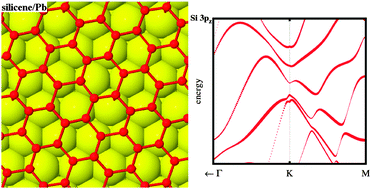Dirac fermions in silicene on Pb(111) surface
Abstract
First-principles density functional theory calculations of silicene deposited on a Pb(111) surface are reported. Several possible silicene superstructures, exhibiting different scanning tunnelling microscopy topography images have been found. All the structures feature low binding energy and very small charge transfer, thus interact weakly with the substrate. As a result linear band dispersion around the K points of the Brillouin zone survives and the bands have mainly 3p character of silicene with very little contribution of the 6p states of Pb. The present study suggests that lead can be the best candidate to host silicene among other metal substrates.


 Please wait while we load your content...
Please wait while we load your content...